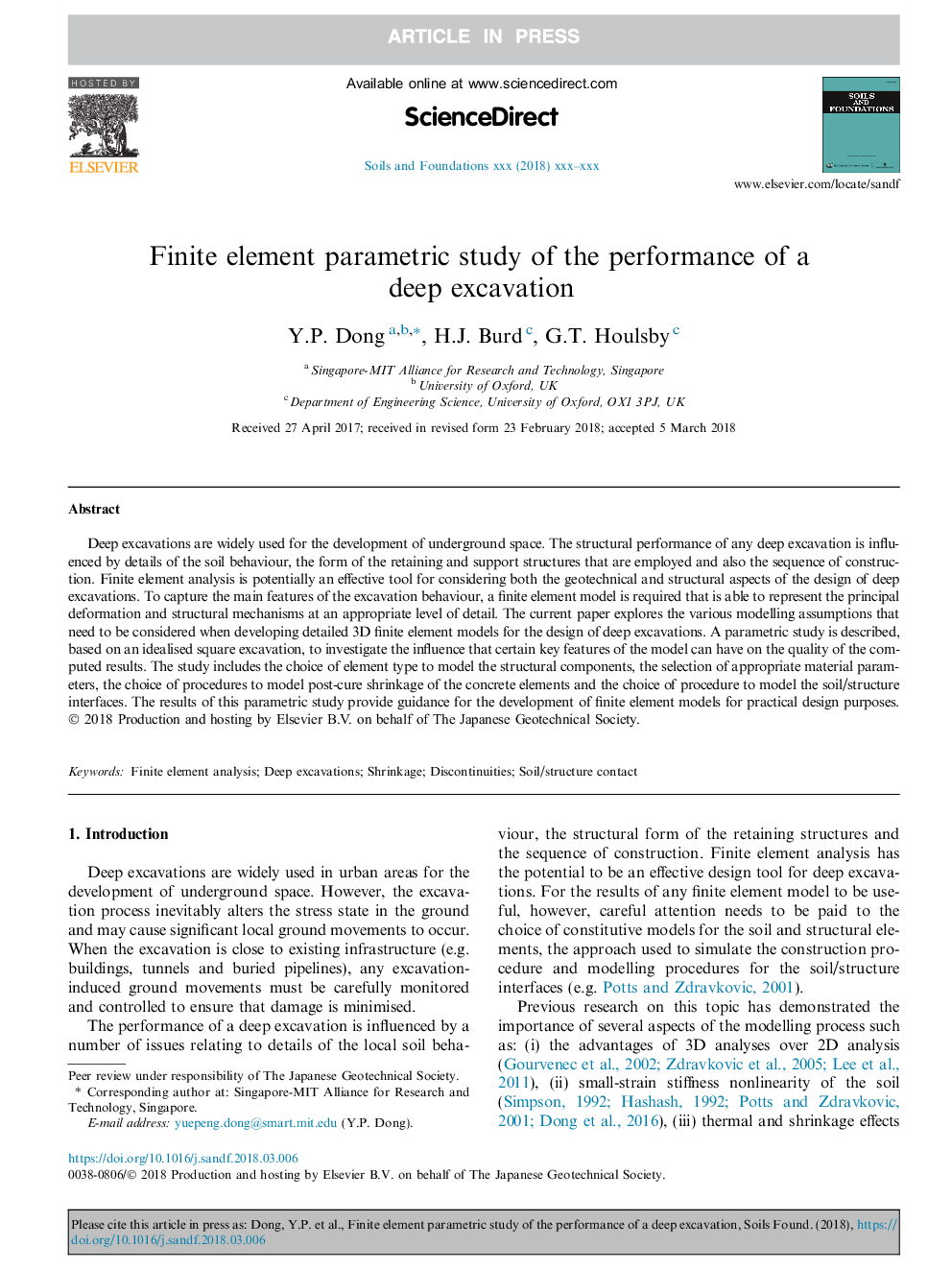| کد مقاله | کد نشریه | سال انتشار | مقاله انگلیسی | نسخه تمام متن |
|---|---|---|---|---|
| 6773770 | 1431929 | 2018 | 15 صفحه PDF | دانلود رایگان |
عنوان انگلیسی مقاله ISI
Finite element parametric study of the performance of a deep excavation
ترجمه فارسی عنوان
بررسی پارامتریک عنصر محدود از عملکرد حفاری عمیق
دانلود مقاله + سفارش ترجمه
دانلود مقاله ISI انگلیسی
رایگان برای ایرانیان
کلمات کلیدی
تجزیه و تحلیل عنصر محدود، کاوشهای عمیق، انقباض، عدم انطباق، تماس با خاک / ساختار،
ترجمه چکیده
حفاری های عمیق به طور گسترده ای برای توسعه فضای زیرزمینی استفاده می شود. عملکرد ساختاری هر حفاری عمیق تحت تأثیر جزئیات رفتار خاک، شکل نگهداری و حمایت از سازه های مورد استفاده و همچنین دنباله ای از ساخت و ساز است. تجزیه و تحلیل عناصر محدود به طور بالقوه یک ابزار موثر برای در نظر گرفتن هر دو جنبه ژئوتکنیک و ساخت و ساز از طراحی حفاری های عمیق است. برای گرفتن ویژگی های اصلی رفتار حفاری، یک مدل عنصر محدودی مورد نیاز است که بتواند تغییر شکل اصلی و مکانیسم های ساختاری را در سطح مناسب جزئیات نشان دهد. در مقاله حاضر، فرضیه های مختلف مدل سازی مورد بررسی قرار می گیرند که باید در هنگام توسعه مدل های جزئی عددی محدود برای طراحی کاوش های عمیق مورد توجه قرار گیرند. یک مطالعه پارامتری براساس یک حفره ای ایدهآل، برای بررسی تاثیراتی که برخی از ویژگیهای کلیدی مدل میتواند بر کیفیت نتایج محاسبه داشته باشد، توصیف شده است. این مطالعه شامل انتخاب نوع عنصری برای مدل سازی اجزای ساختاری، انتخاب پارامترهای مناسب مواد، انتخاب روش برای مدل سازی انعطاف پذیری پس از درمان عناصر بتنی و انتخاب روش برای مدل سازی رابط های خاک / سازه می باشد. نتایج حاصل از این مطالعه پارامتری هدایتی برای توسعه مدل های عناصر محدود برای اهداف طراحی عملی ارائه می دهد.
موضوعات مرتبط
مهندسی و علوم پایه
علوم زمین و سیارات
مهندسی ژئوتکنیک و زمین شناسی مهندسی
چکیده انگلیسی
Deep excavations are widely used for the development of underground space. The structural performance of any deep excavation is influenced by details of the soil behaviour, the form of the retaining and support structures that are employed and also the sequence of construction. Finite element analysis is potentially an effective tool for considering both the geotechnical and structural aspects of the design of deep excavations. To capture the main features of the excavation behaviour, a finite element model is required that is able to represent the principal deformation and structural mechanisms at an appropriate level of detail. The current paper explores the various modelling assumptions that need to be considered when developing detailed 3D finite element models for the design of deep excavations. A parametric study is described, based on an idealised square excavation, to investigate the influence that certain key features of the model can have on the quality of the computed results. The study includes the choice of element type to model the structural components, the selection of appropriate material parameters, the choice of procedures to model post-cure shrinkage of the concrete elements and the choice of procedure to model the soil/structure interfaces. The results of this parametric study provide guidance for the development of finite element models for practical design purposes.
ناشر
Database: Elsevier - ScienceDirect (ساینس دایرکت)
Journal: Soils and Foundations - Volume 58, Issue 3, June 2018, Pages 729-743
Journal: Soils and Foundations - Volume 58, Issue 3, June 2018, Pages 729-743
نویسندگان
Y.P. Dong, H.J. Burd, G.T. Houlsby,
